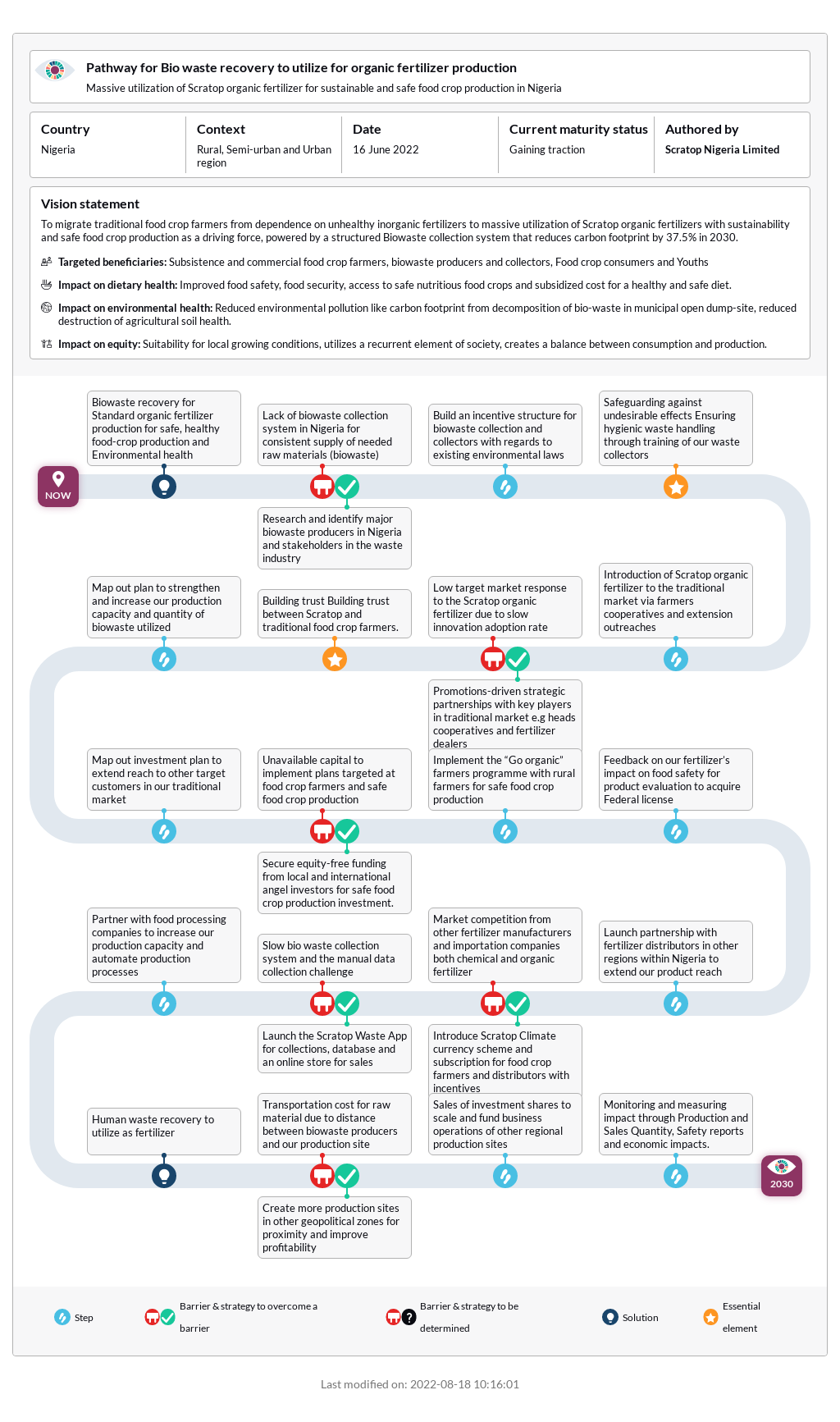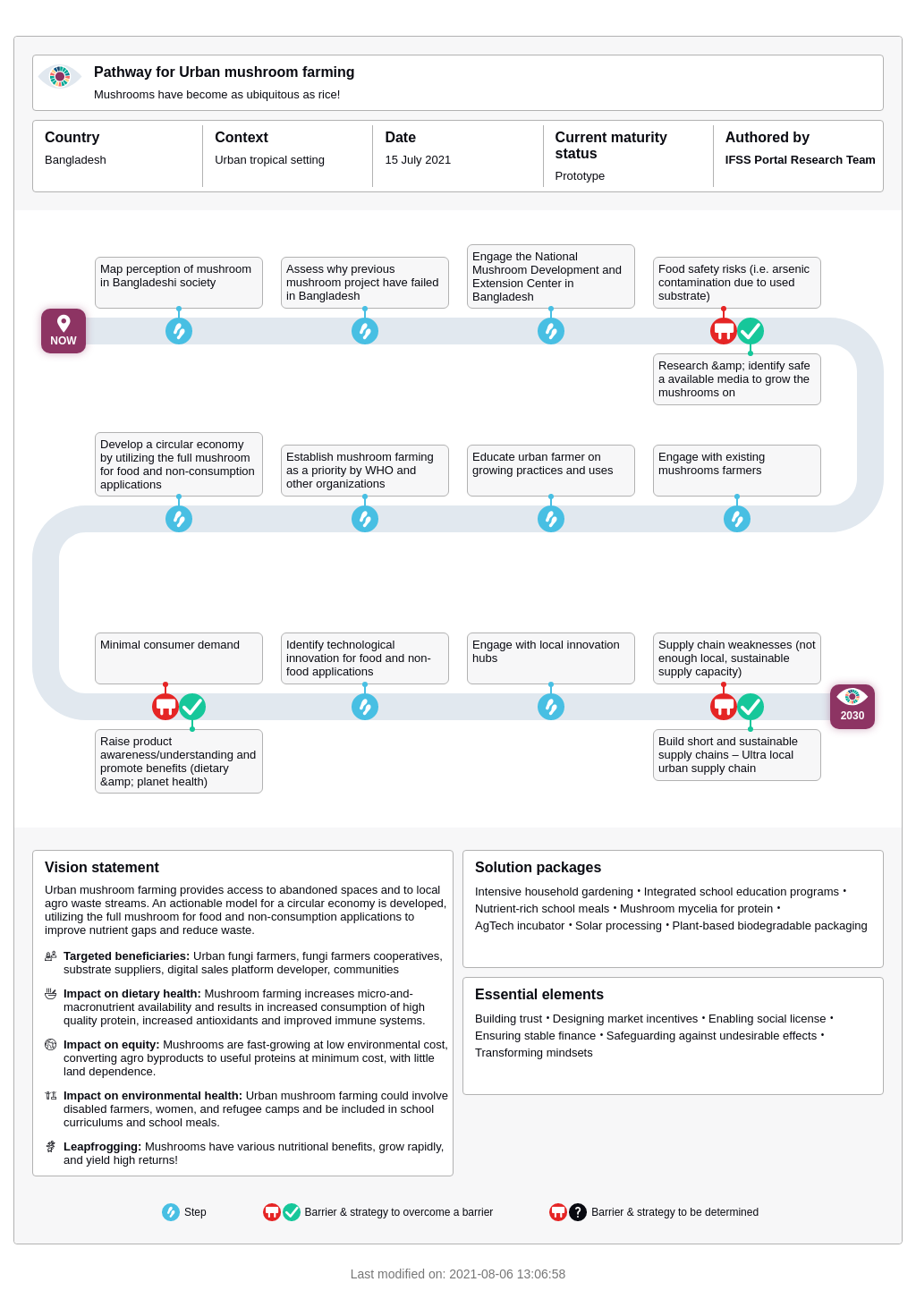
Massive utilization of Scratop organic fertilizer for sustainable and safe food crop production in Nigeria
To migrate traditional food crop farmers from dependence on unhealthy inorganic fertilizers to massive utilization of Scratop organic fertilizers with sustainability and safe food crop production as a driving force, powered by a structured Biowaste collection system that reduces carbon footprint by 37.5% in 2030.



